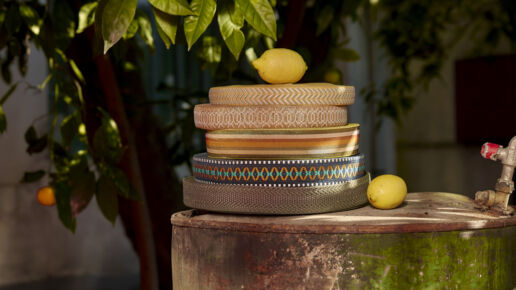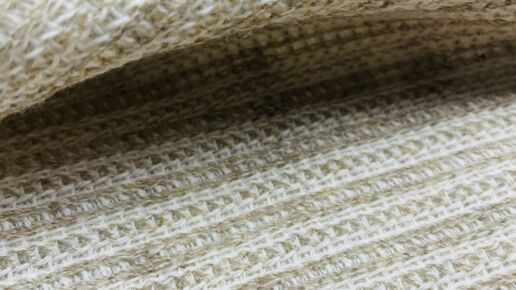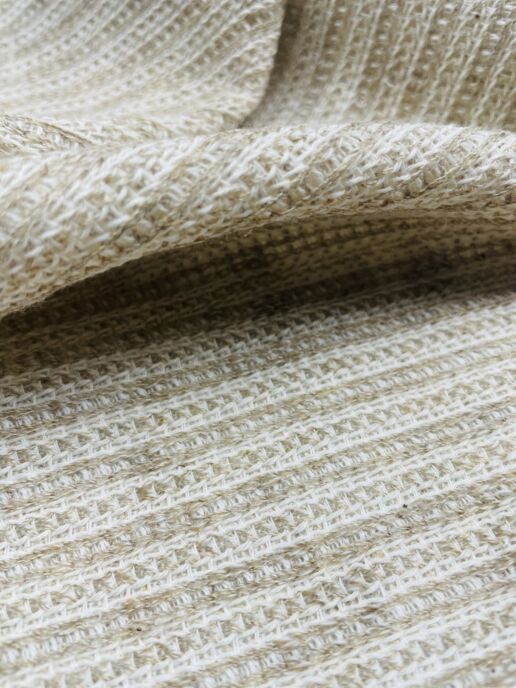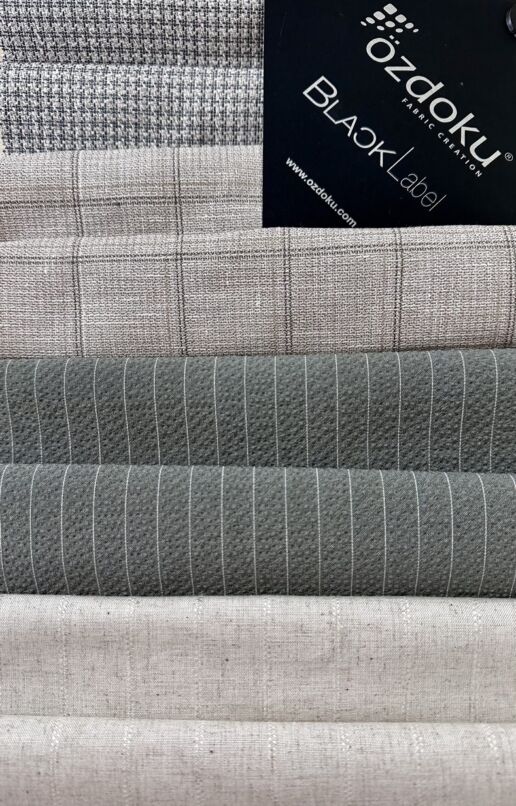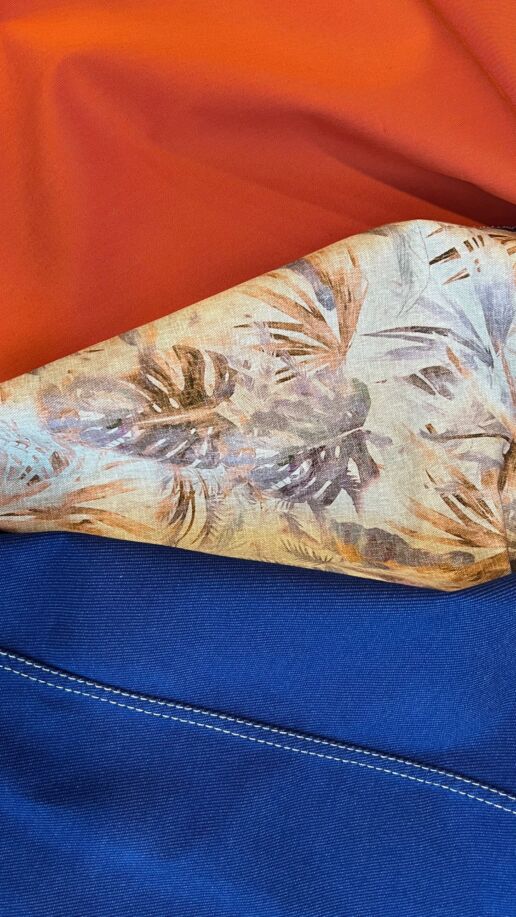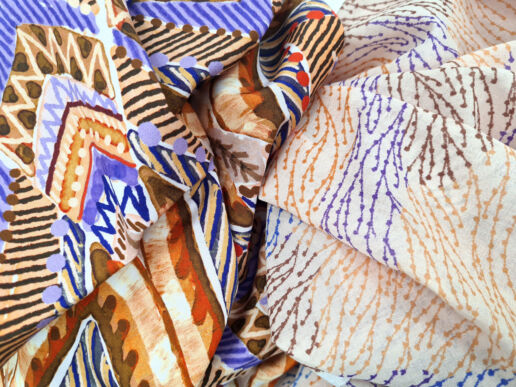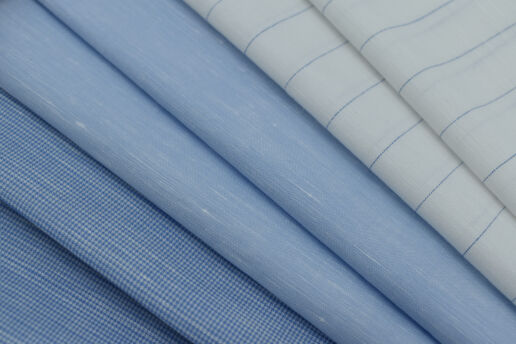New Materials
Fabric Trends Autumn.Winter 25/26 – Part 1
At the upcoming MUNICH FABRIC START, around 600 international suppliers will present their material innovations for all apparel segments in the FABRICS Area. The complete product portfolio of fashionable woven and knitted fabrics made of wool, cotton, silk, blends and functional fibres will be presented here. For the Autumn.Winter 25/26 season, we present some new products and highlights from international producers in our FABRICS blog posts:



6DIAS
6Dias Têxteis Internacionais is a company that produces and sells fabrics. They have a wide variety of compositions and structures, with different finishes. They also have a wide range of denim in different compositions and weights. New this season, they present their fabrics with sustainable fibers from new origins.
Portugal – Hall 3 | E 03
BITZER & SINGLE GmbH
The autumn.winter season with Bitzer + Single GmbH will be full of colour, texture and volume!
The look and feel appears three-dimensional. Jacquard techniques in spacers from Borgini Jersey and elastic tapes from Fritz Moll ensure high visibility and support in sports and leisure. In the field of workwear collections, materials made from Coolmax ® fibers are once again at the top of the rankings.
Another major topic is also developing outside the textile supply chain. Bitzer + Single wants to act even more strongly than before as a service provider and networker and share the experience of the past decades with its customers. With intuition and their knowledge of the industry, they bring their existing and new customers together in a targeted manner, thereby creating new links for a stable supply chain.
Germany – Hall 4 | G 03


M.M.R.A.
M.M.R.A. is a Portuguese family business with 40 years of experience in circular knitting. It exports to several international markets, presents a wide range of natural, organic, recycled and synthetic products. Among the innovations, the use of compositions with mixtures of recycled viscose, organic cotton, recycled cupro, nettle, hemp, banana with pineapple and linen stands out. M.M.R.A. is committed to Oeko-Tex®, GOTS, GRS and OCS certifications.
Portugal – Hall 4 | G 04
POLYTEX STOFFEN B.V.
This season, our collection dives deep into themes of sustainability and modernity. They’ve curated a palette that mixes rich, earthy tones like deep green, warm brown, red, and ochre yellow with cooler, industrial hues and a soft pastel range. Their styles range from contemporary minimalist designs to layered, textured fabrics that embody a sense of luxury and comfort. Abstract designs and vibrant color-blocking, including bold combinations of red and pink, are prominent, following the latest trends. Standout pieces feature minimalist prints on woven jacquard, adding subtle yet striking detail to their fabrics.
The Netherlands – Hall 4 | A 06


VERHEES TEXTILES
Verhees Textiles’ Vibrant New Collection immediately captures your attention with its striking colours and large prints. Bright shades like Fierce Fuchsia, Cheerful Cobalt, and Lucious Lime, paired with bold designs, make a powerful statement. They bring energy and vibrancy to the textile industry and beyond.
The Netherlands – Hall 4 | A 02
THIS MIGHT BE ALSO INTERESTING FOR YOU
FABRIC HIGHLIGHTS & MATERIAL NOVELTIES FOR AUTUMN.WINTER 25/26 – PART II
6. August 2024
LILABLUM dyes natural fibers with food waste, wood industry byproducts, and plant roots - an approach that is sustainable, and forward-thinking. The pioneering textile company blends tradition with innovation in their latest fabric collection.
New Felted Fabric Collection by Gottstein: Where Trends Meet Sustainability
29. July 2024
Gottstein's new felted fabric collection combines exquisite raw materials, innovation, and sustainability. Here’s a glimpse into what makes this brand-new collection so special...
Additionals Trends Autumn.Winter 25/26 – Part 1
24. July 2024
Trend ranges from pared-down women's wear to bold streetwear, innovative, functional and smart labels, a variety of buttons and beautifully coloured linings is what Autumn.Winter 25/26 is holding ready for you.
Fabric Trends Autumn.Winter 25/26 – Part 1
23. July 2024
The collection dives deep into themes of sustainability and modernity. They've curated a palette that mixes rich, earthy tones like deep green, warm brown, red, and ochre yellow with cooler, industrial hues and a soft pastel range.
ReSOURCE – Spring.Summer25
23. May 2024
Certified, recycled materials, environmentally friendly - this is what the sustainable fabrics from the ReSource range stand for.
Fabric Trends Spring.Summer 25 – Part IX
21. May 2024
The colourful prints tell enchanting stories and are divided into five colour groups that can be perfectly combined.
The latest accessory developments for Spring.Summer 25 – Part VI
16. May 2024
This season’s collection is dedicated to offer top quality trims & accessories; all designed to nurture and encourage international fashion creators’ natural curiosity & creativity.
The Warp Of Symbiogenesis – Sustainable Innovations
14. May 2024
These fabrics carry five stories of invisible connections, narrating tales of cooperation, exploitation, and competition among fungi, lichens, corals, and plants.
The latest accessory developments for Spring.Summer 25 – Part V
9. May 2024
Warmth, light, colours, parties, nature, sense of lightness and freedom...It’s summer.
Fabric Trends Spring.Summer 25 – Part VIII
7. May 2024
Their fabrics are light and contemporary and are characterised by tonal textures, minimal and subtle details and by seasonless neutral colours: all these elements make their product range up todate yet timeless.
Fabric Trends Spring.Summer 25 - Part IX
In the FABRICS Area, around 600 international suppliers present their material innovations for all apparel segments. The complete product portfolio of fashionable woven and knitted fabrics made of wool, cotton, silk, blends and functional fibres is represented here. For the Spring.Summer 25 season, we present some highlights from international producers in our FABRICS blogposts:
SERIDE SRL
Seride presents a new colour range for Spring.Summer 25: FOLLOW THE SUN features a range of warm earth tones and oranges enriched by chocolate brown accents. NAIROBI offers vibrant and bright colours such as papaya orange, emerald green and lilac create a beautiful variegated palette. NEW JUNGLE provides a wide choice of khaki, green and brown tones. CITY LIFE comes with sophisticated powder blue, soft pink and natural tones.



TEKSTINA SINCE 1828
Dancing between generations, heritage and today´s time, imagination and reality… these influences are writing the story of Summer 2025. Simple, easy to wear designs with light blue and earthy colours on one side, and organic, colourful shades on the other side. Dance with Tekstina through
Elevated Classic, Chic Bohemian, Botanical and High Summer Moods.

TRANSFERTEX
With over 50 years of experience, Transfertex is the perfect partner for all your sustainable printing needs. Check out the always up-to-date design collection at www.mytfx.de or let’s work together on printing your own designs directly in Kleinostheim, Germany. Take in all the advantages of printing with them like service where and whenever you need it, fast sampling and consistent colour-matchimg through all deliveries.


TROFICLOR DENIM MAKERS
The TROFICOLOR DENIM MAKERS have developed their SS 25 collection by reinforcing principles of responsibility through an even more careful and conscious selection of fibres and production processes and conditions. At the same time, they have increased transparency by extending the traceability of their fabrics. They present a variety of fabrics made from sustainable fibres: BCI cotton, organic cotton with GOTS/OCS certification, recycled cotton and polyester with GRS/RCS certification, Tencel™, regenerated cellulose, linen/hemp. Their ECRU concept, which presents ready-to-wear fabrics in their natural colour – without dyeing processes, as well as their upcycling concept, through the creative reuse of existing fabrics, are particularly noteworthy.




VERHEES TEXTILES
Verhees Textiles and Nerida Hansen join forces for a unique textile collection, with Verhees Textiles as the exclusive distributor. The colourful prints narrate enchanting stories, categorized into five colour groups for perfect combinations. Nerida’s distinctive style is evident in bold and beautiful prints, ranging from grand designs to refined details. The collaboration yields an innovative, joyous collection promising an explosion of colour.



THIS MIGHT BE ALSO INTERESTING FOR YOU
FABRIC HIGHLIGHTS & MATERIAL NOVELTIES FOR AUTUMN.WINTER 25/26 – PART II
6. August 2024
LILABLUM dyes natural fibers with food waste, wood industry byproducts, and plant roots - an approach that is sustainable, and forward-thinking. The pioneering textile company blends tradition with innovation in their latest fabric collection.
New Felted Fabric Collection by Gottstein: Where Trends Meet Sustainability
29. July 2024
Gottstein's new felted fabric collection combines exquisite raw materials, innovation, and sustainability. Here’s a glimpse into what makes this brand-new collection so special...
Additionals Trends Autumn.Winter 25/26 – Part 1
24. July 2024
Trend ranges from pared-down women's wear to bold streetwear, innovative, functional and smart labels, a variety of buttons and beautifully coloured linings is what Autumn.Winter 25/26 is holding ready for you.
Fabric Trends Autumn.Winter 25/26 – Part 1
23. July 2024
The collection dives deep into themes of sustainability and modernity. They've curated a palette that mixes rich, earthy tones like deep green, warm brown, red, and ochre yellow with cooler, industrial hues and a soft pastel range.
ReSOURCE – Spring.Summer25
23. May 2024
Certified, recycled materials, environmentally friendly - this is what the sustainable fabrics from the ReSource range stand for.
Fabric Trends Spring.Summer 25 – Part IX
21. May 2024
The colourful prints tell enchanting stories and are divided into five colour groups that can be perfectly combined.
The latest accessory developments for Spring.Summer 25 – Part VI
16. May 2024
This season’s collection is dedicated to offer top quality trims & accessories; all designed to nurture and encourage international fashion creators’ natural curiosity & creativity.
The Warp Of Symbiogenesis – Sustainable Innovations
14. May 2024
These fabrics carry five stories of invisible connections, narrating tales of cooperation, exploitation, and competition among fungi, lichens, corals, and plants.
The latest accessory developments for Spring.Summer 25 – Part V
9. May 2024
Warmth, light, colours, parties, nature, sense of lightness and freedom...It’s summer.
Fabric Trends Spring.Summer 25 – Part VIII
7. May 2024
Their fabrics are light and contemporary and are characterised by tonal textures, minimal and subtle details and by seasonless neutral colours: all these elements make their product range up todate yet timeless.
Fabric Trends Spring.Summer 25 - Part VIII
In the FABRICS Area, around 600 international suppliers present their material innovations for all apparel segments. The complete product portfolio of fashionable woven and knitted fabrics made of wool, cotton, silk, blends and functional fibres is represented here. For the Spring.Summer 25 season, we present some highlights from international producers in our FABRICS blogposts:
PONTEX
For the next season, Pontex is focused on natural and light, almost imperceptible, fabrics for clothing: linen, linen and cotton, linen and Tencel. The challenge is to adapt to this changing climate respecting environment and the Made in Italy company answers with a new collection rich in natural, ecofriendly yarns. Among the main novelties concerning finishing, they offer the application on these natural fabrics of bio-resins with délavé effects.




PRINTSTORMING
PRINTSTORMING new graphic books – 10 years of Printstorming, a great reason to celebrate with you. Get one of 50 GOODIE BAGS and discover their NEW* Summer Book Baby Infants. Dinos, horses and kittens are presented in pastel spring colours such as Sorbet Pink and Blond Wood. Giraffe, lion and rhino experience many new adventures on safari in summer, in brilliant colours such as Electric Kumquat, Chlorophyll Green and Ray Flower.




PROJECT SRL.
Versatility, sensoriality and responsibility are the peculiarities of the new SS25 collection of PROJECT SRL. Their fabrics are light and contemporary and are characterised by tonal textures, minimal and subtle details and by seasonless neutral colours: all these elements make their product range up to date yet timeless.



RESOTEX
Upcycling with style, sense and expertise! Resotex has been the leading B2B wholesaler for overproduction and remnants for over 30 years. They buy up remnants from well-known brands, process them and sell them via their online shop resotex. de. 8,000 fabrics in the warehouse are immediately available. Here you can buy from as little as 1 metre and €50 net per order and have free samples sent to you in advance.


SEIDRA TEXTILWERKE
Seidra’s summer collection impresses with beautiful colour combinations, new weaves and interesting textures. In addition to the usual high-quality pure linen items – which also include many creaseresistant linen fabrics – they also offer attractively priced alternatives. In the knitwear sector, they present modern and traditional patterns, as well as NOOS items. The combination of coordinated colours in woven and knitted items is still an absolute plus!
THIS MIGHT BE ALSO INTERESTING FOR YOU
FABRIC HIGHLIGHTS & MATERIAL NOVELTIES FOR AUTUMN.WINTER 25/26 – PART II
6. August 2024
LILABLUM dyes natural fibers with food waste, wood industry byproducts, and plant roots - an approach that is sustainable, and forward-thinking. The pioneering textile company blends tradition with innovation in their latest fabric collection.
New Felted Fabric Collection by Gottstein: Where Trends Meet Sustainability
29. July 2024
Gottstein's new felted fabric collection combines exquisite raw materials, innovation, and sustainability. Here’s a glimpse into what makes this brand-new collection so special...
Additionals Trends Autumn.Winter 25/26 – Part 1
24. July 2024
Trend ranges from pared-down women's wear to bold streetwear, innovative, functional and smart labels, a variety of buttons and beautifully coloured linings is what Autumn.Winter 25/26 is holding ready for you.
Fabric Trends Autumn.Winter 25/26 – Part 1
23. July 2024
The collection dives deep into themes of sustainability and modernity. They've curated a palette that mixes rich, earthy tones like deep green, warm brown, red, and ochre yellow with cooler, industrial hues and a soft pastel range.
ReSOURCE – Spring.Summer25
23. May 2024
Certified, recycled materials, environmentally friendly - this is what the sustainable fabrics from the ReSource range stand for.
Fabric Trends Spring.Summer 25 – Part IX
21. May 2024
The colourful prints tell enchanting stories and are divided into five colour groups that can be perfectly combined.
The latest accessory developments for Spring.Summer 25 – Part VI
16. May 2024
This season’s collection is dedicated to offer top quality trims & accessories; all designed to nurture and encourage international fashion creators’ natural curiosity & creativity.
The Warp Of Symbiogenesis – Sustainable Innovations
14. May 2024
These fabrics carry five stories of invisible connections, narrating tales of cooperation, exploitation, and competition among fungi, lichens, corals, and plants.
The latest accessory developments for Spring.Summer 25 – Part V
9. May 2024
Warmth, light, colours, parties, nature, sense of lightness and freedom...It’s summer.
Fabric Trends Spring.Summer 25 – Part VIII
7. May 2024
Their fabrics are light and contemporary and are characterised by tonal textures, minimal and subtle details and by seasonless neutral colours: all these elements make their product range up todate yet timeless.
Fabric Trends Spring.Summer 25 – Part VII
In the FABRICS Area, around 600 international suppliers present their material innovations for all apparel segments. The complete product portfolio of fashionable woven and knitted fabrics made of wool, cotton, silk, blends and functional fibres is represented here. For the Spring.Summer 25 season, we present some highlights from international producers in our FABRICS blogposts:
ÖZEN MENSUCAT
Özen Mensucat has over three decades of expertise in the industry and is located with a showroom in Istanbul and a cutting-edge factory in Çerkezköy, Turkey. The company gives priority to sustainability through the incorporation of groundbreaking recycled materials like Circulose®, certified regenerative agriculture products such as Regenagri® Cotton, and the use of sustainable materials such as TENCEL™ x REFIBRA™. With a focus on these new-generation materials and green chemistry solutions, Özen Mensucat supports shaping the future of eco-conscious fashion.

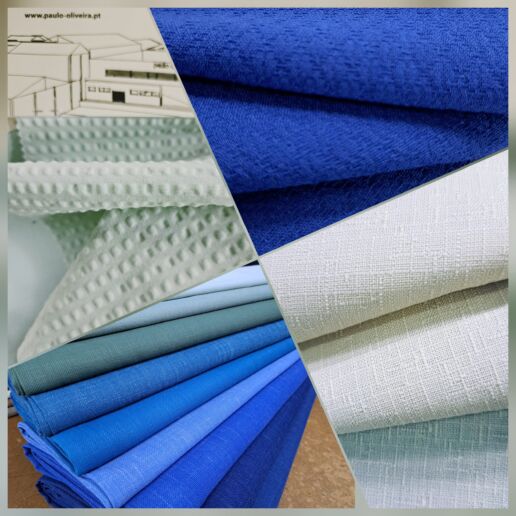
PAULO DE OLIVEIRA SA
The Spring/Summer collection of Paulo de Oliveira is inspired by naturals, comfort and light colours. They have a large offer of innovative linen mixtures that offer comfort and softness. Their focus is on sustainable raw materials produced in Europe with ecological processes, using recycled materials and renewable energy with state-of-the-art manufacturing processes that are most efficient in the world regarding low carbon footprint.
POLOPIQUÉ
Polopiqué defines fabric and jersey collections through research and sustainability, focusing on achieving three-dimensionality, nuanced colours, and a mix of materials. They specialize in crafting eco-sustainable fabrics and jerseys using in-house developed yarns. Each season, their range caters to diverse needs in men’s, women’s, and home textile collections, blending passion with fashion, showcasing from Portugal to the world.




POLYTEX STOFFEN
Explore the Spring/Summer 25 collection of Polytex Stoffen and dive into vibrant colors like Fel Lime, Apricot Crush and Ibiza Blue. Discover eco-friendly innovations in their yoga line with sustainable fabrics and recycled pineapple material. This season is all about botanical prints, joyful design, fun prints and arty basics. Excitingly, they now offer small minimum quantities to meet diverse needs.




PONGEES
As designers look to source sustainable fabrics from suppliers with sustainable consciousness, Pongees has seen a greater demand for its plain eco-friendly, dyed silks and is continuing to add new colours to its collection. It has also introduced a bespoke shade card catalogue service so buyers can build their personal silk reference guide, which will save on wastage.

THIS MIGHT ALSO BE INTERESTING FOR YOU
FABRIC HIGHLIGHTS & MATERIAL NOVELTIES FOR AUTUMN.WINTER 25/26 – PART II
6. August 2024
LILABLUM dyes natural fibers with food waste, wood industry byproducts, and plant roots - an approach that is sustainable, and forward-thinking. The pioneering textile company blends tradition with innovation in their latest fabric collection.
New Felted Fabric Collection by Gottstein: Where Trends Meet Sustainability
29. July 2024
Gottstein's new felted fabric collection combines exquisite raw materials, innovation, and sustainability. Here’s a glimpse into what makes this brand-new collection so special...
Additionals Trends Autumn.Winter 25/26 – Part 1
24. July 2024
Trend ranges from pared-down women's wear to bold streetwear, innovative, functional and smart labels, a variety of buttons and beautifully coloured linings is what Autumn.Winter 25/26 is holding ready for you.
Fabric Trends Autumn.Winter 25/26 – Part 1
23. July 2024
The collection dives deep into themes of sustainability and modernity. They've curated a palette that mixes rich, earthy tones like deep green, warm brown, red, and ochre yellow with cooler, industrial hues and a soft pastel range.
ReSOURCE – Spring.Summer25
23. May 2024
Certified, recycled materials, environmentally friendly - this is what the sustainable fabrics from the ReSource range stand for.
Fabric Trends Spring.Summer 25 – Part IX
21. May 2024
The colourful prints tell enchanting stories and are divided into five colour groups that can be perfectly combined.
The latest accessory developments for Spring.Summer 25 – Part VI
16. May 2024
This season’s collection is dedicated to offer top quality trims & accessories; all designed to nurture and encourage international fashion creators’ natural curiosity & creativity.
The Warp Of Symbiogenesis – Sustainable Innovations
14. May 2024
These fabrics carry five stories of invisible connections, narrating tales of cooperation, exploitation, and competition among fungi, lichens, corals, and plants.
The latest accessory developments for Spring.Summer 25 – Part V
9. May 2024
Warmth, light, colours, parties, nature, sense of lightness and freedom...It’s summer.
Fabric Trends Spring.Summer 25 – Part VIII
7. May 2024
Their fabrics are light and contemporary and are characterised by tonal textures, minimal and subtle details and by seasonless neutral colours: all these elements make their product range up todate yet timeless.
Fabric Trends Spring.Summer 25 - Part VI
In the FABRICS Area, around 600 international suppliers present their material innovations for all apparel segments. The complete product portfolio of fashionable woven and knitted fabrics made of wool, cotton, silk, blends and functional fibres is represented here. For the Spring.Summer 25 season, we present some highlights from international producers in our FABRICS blogposts:
MER FABRIC
Mer Fabric is set to unveil a new line of woven fabrics for shirts, pants, dresses, and children’s wear, tailored to meet unique customer needs with exceptional versatility. Their commitment to sustainability is at the forefront as they innovate within the textile industry.
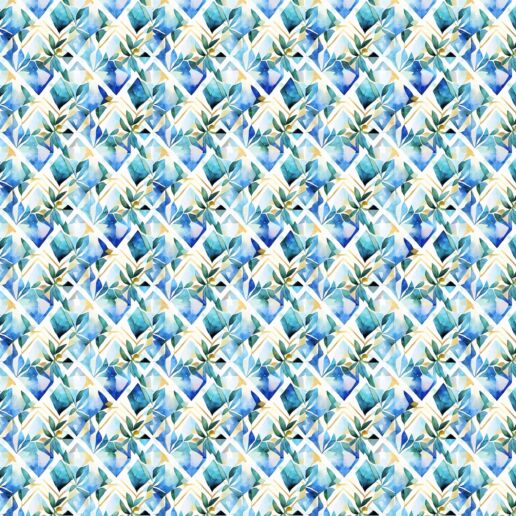
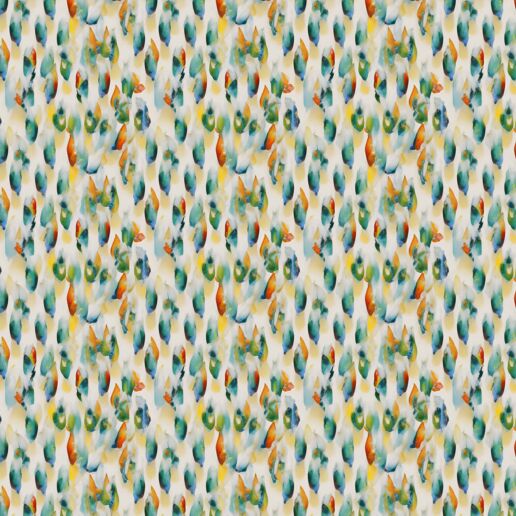
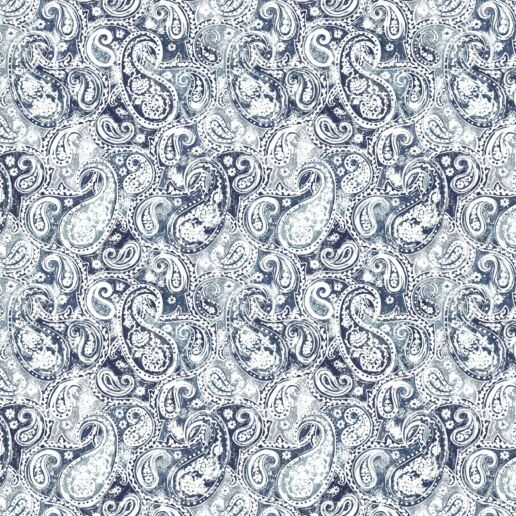
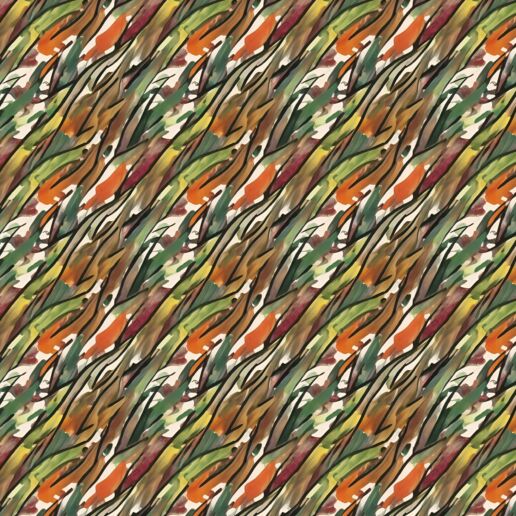
MERT IPEK
Mert Ipek has produced fabrics with natural fibers from the beginning. They offer both woven an knitted fabrics made from silk, linen, wool and hemp with a sustainable service approach. They pursue sustainable technologies and produce their products in a sustainable way. With their naturally blended, high-quality and certified fabrics, they serve the world and the future.
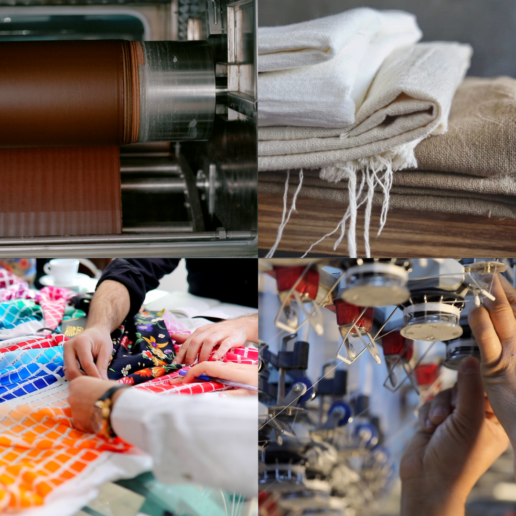
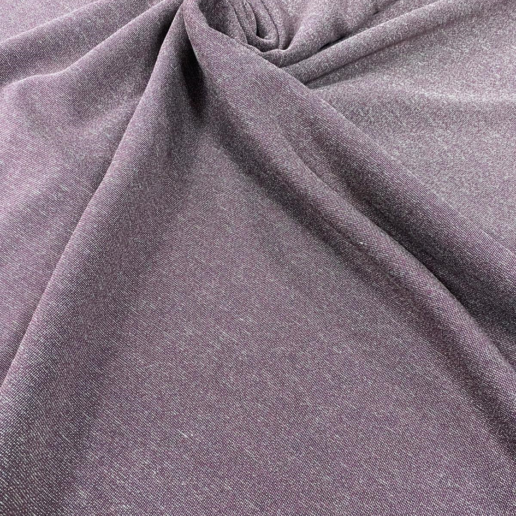
ORDU TEKSTIL
Ordu Tekstil serves their customers with their modal, bamboo and cotton-based fabrics, which they continue to produce in terms of sustainability this year. In addition to that, their collections are being empowered with different knitting types such as jacquard and waffle.
ÖRKUM TEXTILE
Örkum Textiles, a pioneer in sustainable textile production, unveils its groundbreaking collection at Munich Fabric Start. With a rich legacy and a focus on sustainability, they offer a diverse range of ecofriendly fabrics like Modal, Tencel, Linen, Organic and Regenagri Cotton. Their commitment to quality meets the latest fashion trends through innovative designs. Embracing change, their dynamic team ensures to remain at the forefront of style and sustainability. Experience a brighter, stylish world where creativity and quality converge.
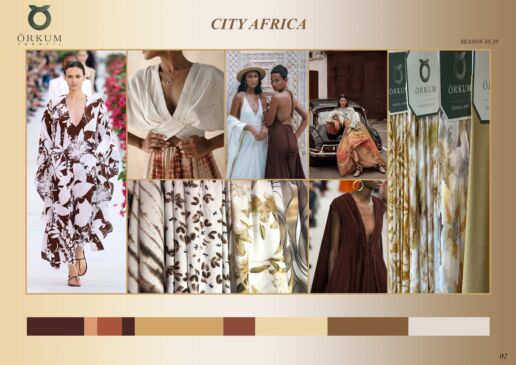
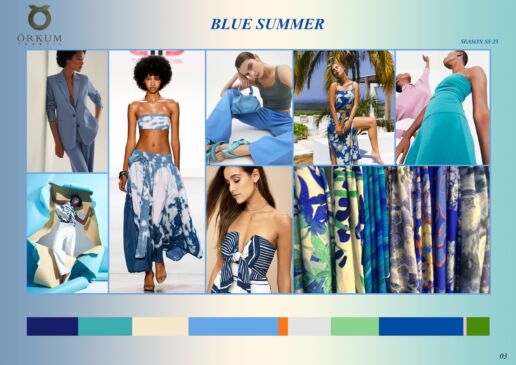
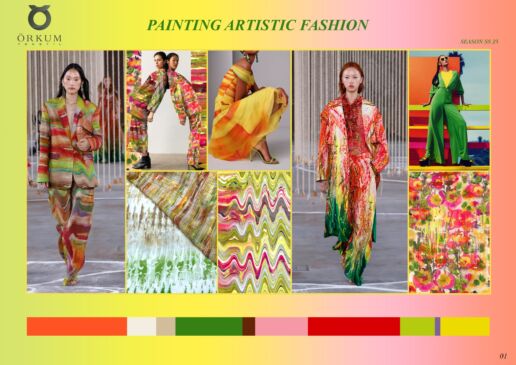
ÖZDOKU
A sustainable life cycle is becoming a feeling that is taken into consideration by producers and consumers day by day. The SS collection includes natural colours as if they come directly from the field. Fabric designs come in blends of linen, cotton, hemp and lyocell as well as in pastel colours of the season. Also bright and vibrant colours come into prominence that transfer the energy of summer.
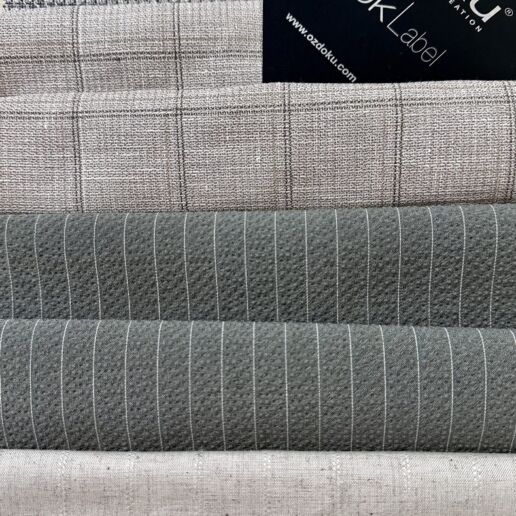
THIS MIGHT ALSO BE INTERESTING FOR YOU
FABRIC HIGHLIGHTS & MATERIAL NOVELTIES FOR AUTUMN.WINTER 25/26 – PART II
6. August 2024
LILABLUM dyes natural fibers with food waste, wood industry byproducts, and plant roots - an approach that is sustainable, and forward-thinking. The pioneering textile company blends tradition with innovation in their latest fabric collection.
New Felted Fabric Collection by Gottstein: Where Trends Meet Sustainability
29. July 2024
Gottstein's new felted fabric collection combines exquisite raw materials, innovation, and sustainability. Here’s a glimpse into what makes this brand-new collection so special...
Additionals Trends Autumn.Winter 25/26 – Part 1
24. July 2024
Trend ranges from pared-down women's wear to bold streetwear, innovative, functional and smart labels, a variety of buttons and beautifully coloured linings is what Autumn.Winter 25/26 is holding ready for you.
Fabric Trends Autumn.Winter 25/26 – Part 1
23. July 2024
The collection dives deep into themes of sustainability and modernity. They've curated a palette that mixes rich, earthy tones like deep green, warm brown, red, and ochre yellow with cooler, industrial hues and a soft pastel range.
ReSOURCE – Spring.Summer25
23. May 2024
Certified, recycled materials, environmentally friendly - this is what the sustainable fabrics from the ReSource range stand for.
Fabric Trends Spring.Summer 25 – Part IX
21. May 2024
The colourful prints tell enchanting stories and are divided into five colour groups that can be perfectly combined.
The latest accessory developments for Spring.Summer 25 – Part VI
16. May 2024
This season’s collection is dedicated to offer top quality trims & accessories; all designed to nurture and encourage international fashion creators’ natural curiosity & creativity.
The Warp Of Symbiogenesis – Sustainable Innovations
14. May 2024
These fabrics carry five stories of invisible connections, narrating tales of cooperation, exploitation, and competition among fungi, lichens, corals, and plants.
The latest accessory developments for Spring.Summer 25 – Part V
9. May 2024
Warmth, light, colours, parties, nature, sense of lightness and freedom...It’s summer.
Fabric Trends Spring.Summer 25 – Part VIII
7. May 2024
Their fabrics are light and contemporary and are characterised by tonal textures, minimal and subtle details and by seasonless neutral colours: all these elements make their product range up todate yet timeless.
Fabric Trends Spring.Summer 25 - Part V
In the FABRICS Area, around 600 international suppliers present their material innovations for all apparel segments. The complete product portfolio of fashionable woven and knitted fabrics made of wool, cotton, silk, blends and functional fibres is represented here. For the Spring.Summer 25 season, we present some highlights from international producers in our FABRICS blogposts:
KASAR & DUAL TEKSTIL
With nearly 60 years of experience, Kasar & Dual has a wide range of high quality knitted fabrics manufactured using the latest technologies. They continue to be a pioneer in the sector with rain harvesting and solar energy applications by adopting sustainability and environmental awareness. They are proud to be an example for other companies in the sector with its special machines that are unique in the world and projects that reduce water use. They have OEKO-TEX, GOTS, OCS and GRS certificates.
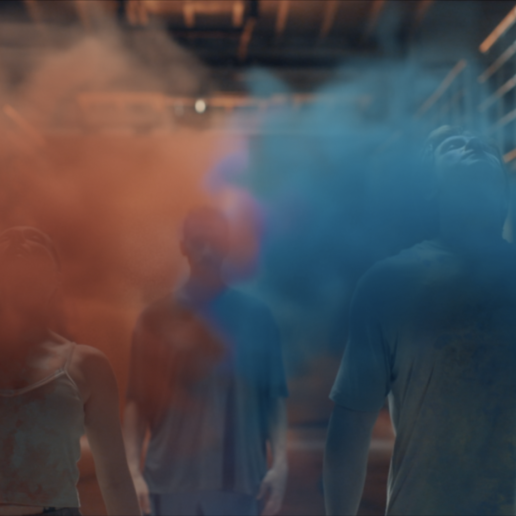
KUMASH TEKSTIL
In its new spring/summer 2025 collection, Kumash Fabrics, consisting of a dynamic team, is focusing on lasting and social sustainability. With its new trend colours such as turquoise, copper and green, they want to set an example for more sensitivity, transparency and sustainability, among other things through various woven fabrics made from natural fibres such as cotton, linen and Tencel.
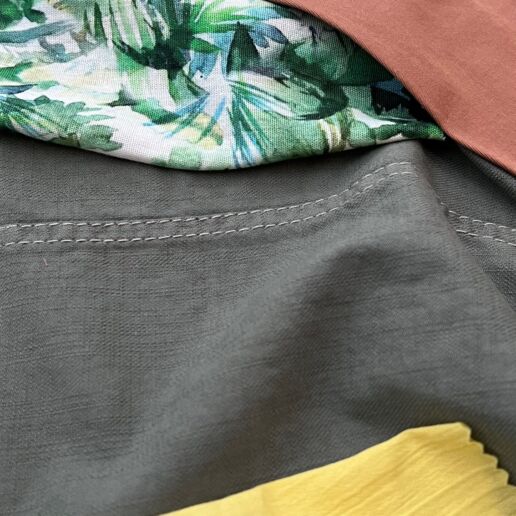
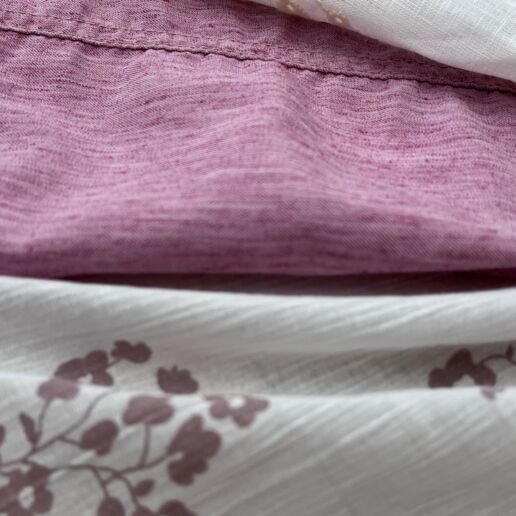
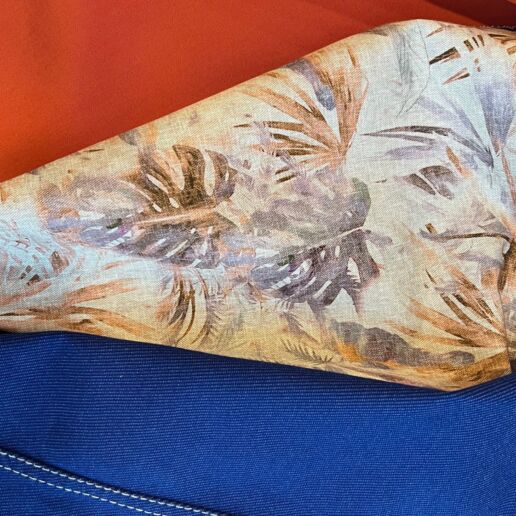
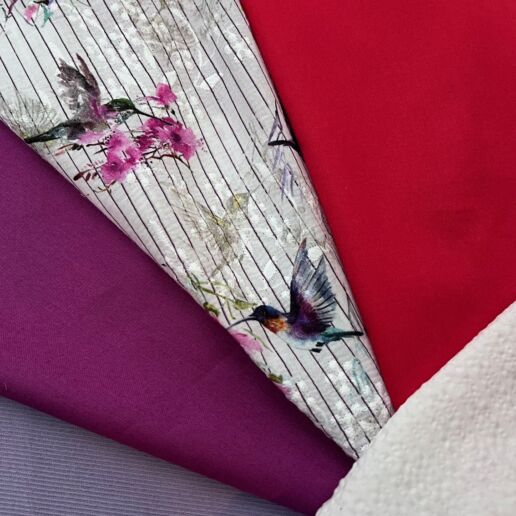
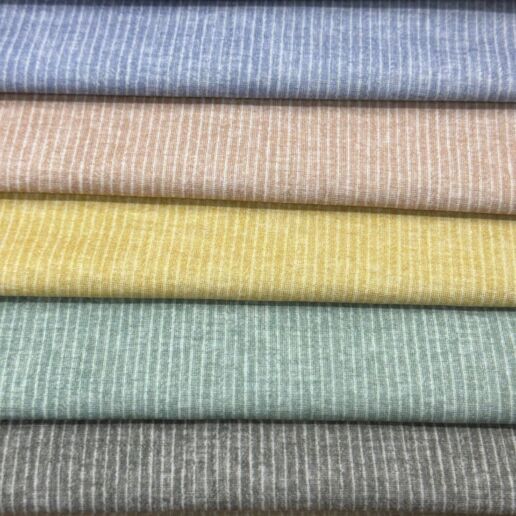
LAMI TEXTILE
Lami Textile’s inspiring SS25 fabric collection offers comfort and is provided with recycled and elastane blends to ensure freedom of movement. Lami Textile’s fabrics are ready for summer action: practical, functional, eco-friendly, elegant and evolving to bring suit fabrics from the classic to the casual look.
LEMAR
The Spring/Summer 25 Collection of Lemar continues to uphold their commitment to ecoconscious fashion. At the heart of this collection is Q-Cycle by Fulgar™, a revolutionary approach that incorporates end-of-life tires into the mass balance technology used during its production, minimizing waste and giving a new life to materials that would contribute to environmental challenges. Join Lemar to weave a better future.
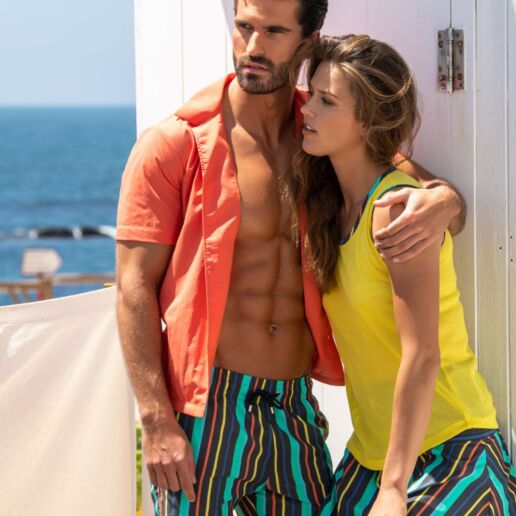
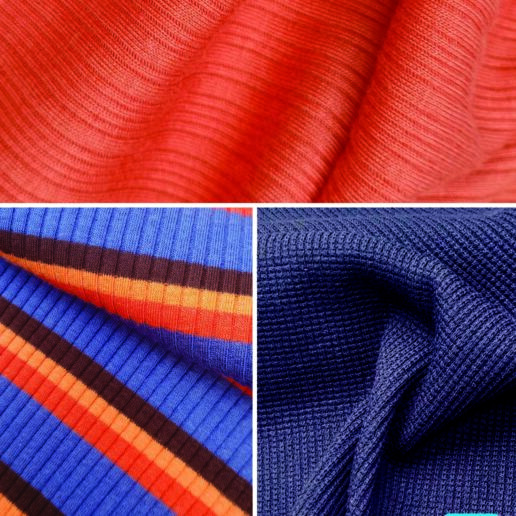
M.M.R.A.
M.M.R.A. is a Portuguese family business with 40 years of experience in circular knitting. It exports to several international markets, presents a wide range of natural, organic, recycled and synthetic products. Among the innovations, the use of compositions with mixtures of recycled viscose, organic cotton, recycled cupro, nettle, hemp, banana with pineapple and linen stands out. M.M.R.A. is committed to OEKO-TEX®, GOTS, GRS and OCS certifications.
THIS MIGHT ALSO BE INTERESTING FOR YOU
FABRIC HIGHLIGHTS & MATERIAL NOVELTIES FOR AUTUMN.WINTER 25/26 – PART II
6. August 2024
LILABLUM dyes natural fibers with food waste, wood industry byproducts, and plant roots - an approach that is sustainable, and forward-thinking. The pioneering textile company blends tradition with innovation in their latest fabric collection.
New Felted Fabric Collection by Gottstein: Where Trends Meet Sustainability
29. July 2024
Gottstein's new felted fabric collection combines exquisite raw materials, innovation, and sustainability. Here’s a glimpse into what makes this brand-new collection so special...
Additionals Trends Autumn.Winter 25/26 – Part 1
24. July 2024
Trend ranges from pared-down women's wear to bold streetwear, innovative, functional and smart labels, a variety of buttons and beautifully coloured linings is what Autumn.Winter 25/26 is holding ready for you.
Fabric Trends Autumn.Winter 25/26 – Part 1
23. July 2024
The collection dives deep into themes of sustainability and modernity. They've curated a palette that mixes rich, earthy tones like deep green, warm brown, red, and ochre yellow with cooler, industrial hues and a soft pastel range.
ReSOURCE – Spring.Summer25
23. May 2024
Certified, recycled materials, environmentally friendly - this is what the sustainable fabrics from the ReSource range stand for.
Fabric Trends Spring.Summer 25 – Part IX
21. May 2024
The colourful prints tell enchanting stories and are divided into five colour groups that can be perfectly combined.
The latest accessory developments for Spring.Summer 25 – Part VI
16. May 2024
This season’s collection is dedicated to offer top quality trims & accessories; all designed to nurture and encourage international fashion creators’ natural curiosity & creativity.
The Warp Of Symbiogenesis – Sustainable Innovations
14. May 2024
These fabrics carry five stories of invisible connections, narrating tales of cooperation, exploitation, and competition among fungi, lichens, corals, and plants.
The latest accessory developments for Spring.Summer 25 – Part V
9. May 2024
Warmth, light, colours, parties, nature, sense of lightness and freedom...It’s summer.
Fabric Trends Spring.Summer 25 – Part VIII
7. May 2024
Their fabrics are light and contemporary and are characterised by tonal textures, minimal and subtle details and by seasonless neutral colours: all these elements make their product range up todate yet timeless.
Fabric Trends Spring.Summer 25 - Part IV
In the FABRICS Area, around 600 international suppliers present their material innovations for all apparel segments. The complete product portfolio of fashionable woven and knitted fabrics made of wool, cotton, silk, blends and functional fibres is represented here. For the Spring.Summer 25 season, we present some highlights from international producers in our FABRICS blogposts:
GRATEX
The Grausam Textil Spring/Summer 25 collection is characterised by a clear, bright colouring. It presents a variety of prints with matching jacquards, yarn dye items, lace and outer fabrics. Playful designs and a wide variety of base materials create a unique collection full of ideas and possibilities.
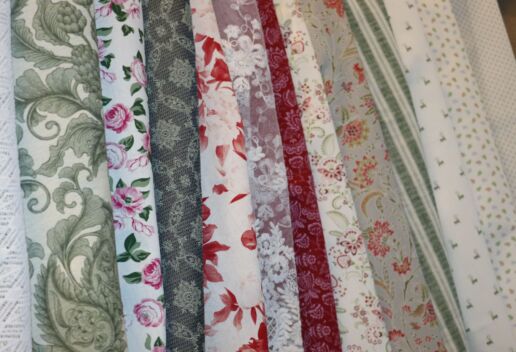
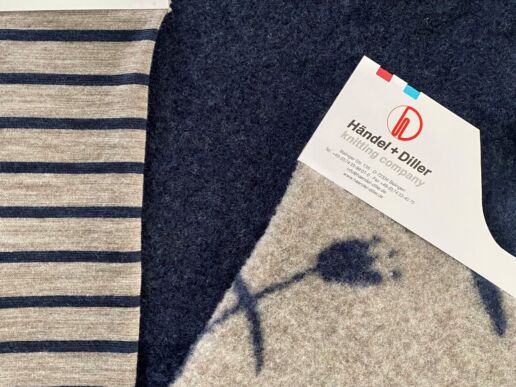
HÄNDEL + DILLER GMBH
Händel + Diller has been knitting fabrics in southern Germany since 1962. Under the premise of certified environmental and social standards, circular knitted fabrics are produced for manufacturers of lingerie, home- and sportswear, orthopaedics and technical applications. The range for the Spring.Summer 25 collection also includes GOTS-certified wool fleece made of 100 % merinowool or in cotton blends, including jacquard patterns.
HEINRICH SUNDAG – TEXTILDESIGN + VERTRIEB
Summer, sun, well-being: Cooling materials such as cotton, linen, hemp is wanted as plain or combined qualities. Linen comes as woven or delicate knitted alternative. Besides that, fine merino qualities, lightly milled are matching the season between seasons. GOTS and GRS are also included.
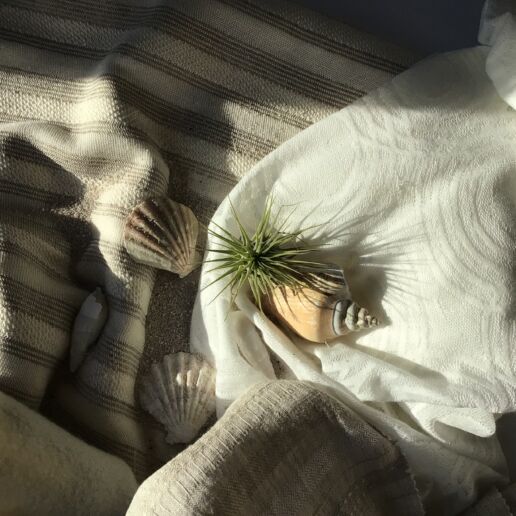
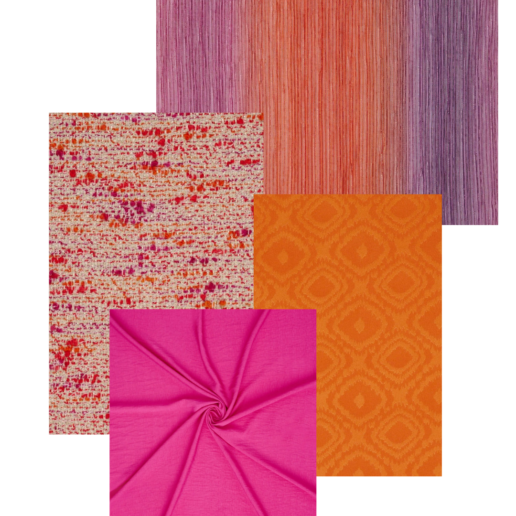
IOAKIMIDIS TEXTILES
Ioakimidis Textiles invests in excellence by following and forecasting new fashion trends as well as by largely defining these trends through unique stories of vision and creativity. Their latest designs offer a glimpse into the endless possibilities and imaginative ways in which their fabrics can be incorporated into your designs. Get inspired and explore their extensive plain qualities collection of cotton, linen, rayon & viscose textiles in crêpe, satin & muslin along with their unique fancy lace, jacquard or embroidered textiles and many more.
KARMA KOKTEYL KNITTINGS
Karma Kokteyl is a fabric manufacturer with over 35 years of experience. Over these years, they continue to produce by following the latest innovations on the fashion and technological developments. Their main vision is to give their customers fast and quality production according to their exact requests. They are able to produce fabrics like; Single jersey, Double jersey, Jacquards, Ribs, Interlock, Elec. Jacquards, Pique. The key fibres used are: viscose, cotton, polyamide, polyester, linen and spandex also with branded yarns like lycra, modal, tencel, lyocell and organic cottons. As a company, it is their goal to continue working with sustainable fibers and their blends, as well as jacquard and interlock knitting.
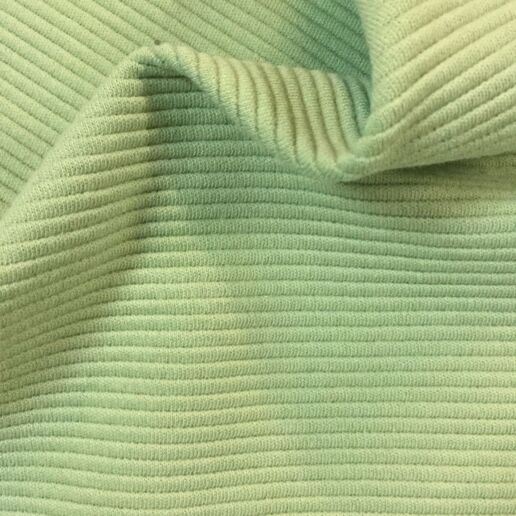
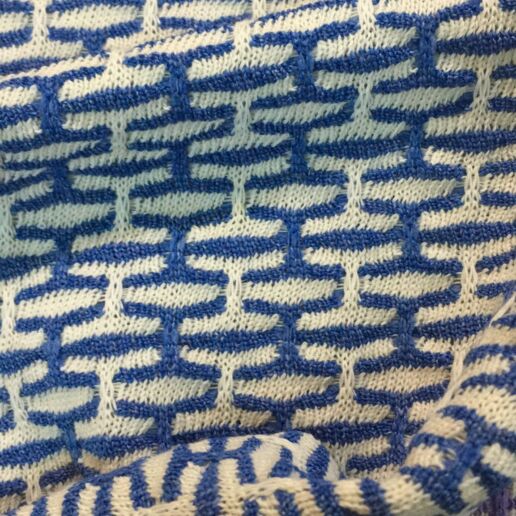
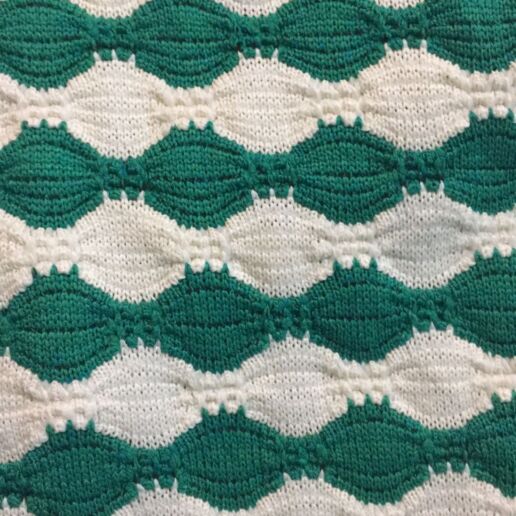
THIS MIGHT ALSO BE INTERESTING FOR YOU
FABRIC HIGHLIGHTS & MATERIAL NOVELTIES FOR AUTUMN.WINTER 25/26 – PART II
6. August 2024
LILABLUM dyes natural fibers with food waste, wood industry byproducts, and plant roots - an approach that is sustainable, and forward-thinking. The pioneering textile company blends tradition with innovation in their latest fabric collection.
New Felted Fabric Collection by Gottstein: Where Trends Meet Sustainability
29. July 2024
Gottstein's new felted fabric collection combines exquisite raw materials, innovation, and sustainability. Here’s a glimpse into what makes this brand-new collection so special...
Additionals Trends Autumn.Winter 25/26 – Part 1
24. July 2024
Trend ranges from pared-down women's wear to bold streetwear, innovative, functional and smart labels, a variety of buttons and beautifully coloured linings is what Autumn.Winter 25/26 is holding ready for you.
Fabric Trends Autumn.Winter 25/26 – Part 1
23. July 2024
The collection dives deep into themes of sustainability and modernity. They've curated a palette that mixes rich, earthy tones like deep green, warm brown, red, and ochre yellow with cooler, industrial hues and a soft pastel range.
ReSOURCE – Spring.Summer25
23. May 2024
Certified, recycled materials, environmentally friendly - this is what the sustainable fabrics from the ReSource range stand for.
Fabric Trends Spring.Summer 25 – Part IX
21. May 2024
The colourful prints tell enchanting stories and are divided into five colour groups that can be perfectly combined.
The latest accessory developments for Spring.Summer 25 – Part VI
16. May 2024
This season’s collection is dedicated to offer top quality trims & accessories; all designed to nurture and encourage international fashion creators’ natural curiosity & creativity.
The Warp Of Symbiogenesis – Sustainable Innovations
14. May 2024
These fabrics carry five stories of invisible connections, narrating tales of cooperation, exploitation, and competition among fungi, lichens, corals, and plants.
The latest accessory developments for Spring.Summer 25 – Part V
9. May 2024
Warmth, light, colours, parties, nature, sense of lightness and freedom...It’s summer.
Fabric Trends Spring.Summer 25 – Part VIII
7. May 2024
Their fabrics are light and contemporary and are characterised by tonal textures, minimal and subtle details and by seasonless neutral colours: all these elements make their product range up todate yet timeless.
Fabric Trends Spring.Summer 25 - Part III
In the FABRICS Area, around 600 international suppliers present their material innovations for all apparel segments. The complete product portfolio of fashionable woven and knitted fabrics made of wool, cotton, silk, blends and functional fibres is represented here. For the Spring.Summer 25 season, we present some highlights from international producers in our FABRICS blogposts:
ETICO PRINTS & FABRICS
30 years of printing experience and a passion for blending contemporary and traditional fashion, ETICO leaves a unique mark in the exciting world of fashion. With their proficient design team, they offer a wide collection for every story. They prioritize design excellence, giving utmost importance to their customers’ ever-changing mood boards, creating stunning collections. Join them on this fashionable journey and experience a whole new dimension of self-expression!
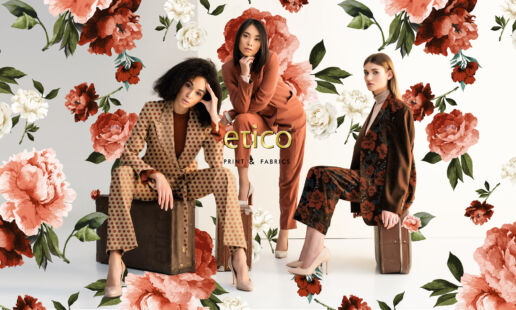
FABRIC & CO.
Fabric & Co. focuses on sustainability in its new collection, designed in line with the latest trends. With a production facility known for continuous investments in technology, the brand adopts an innovative approach and adheres to a principle of not compromising on quality.
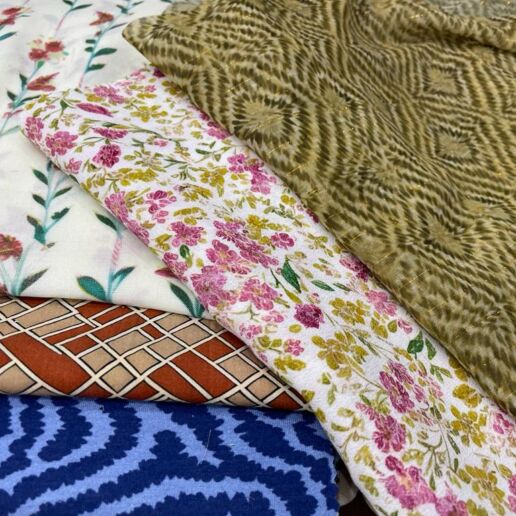
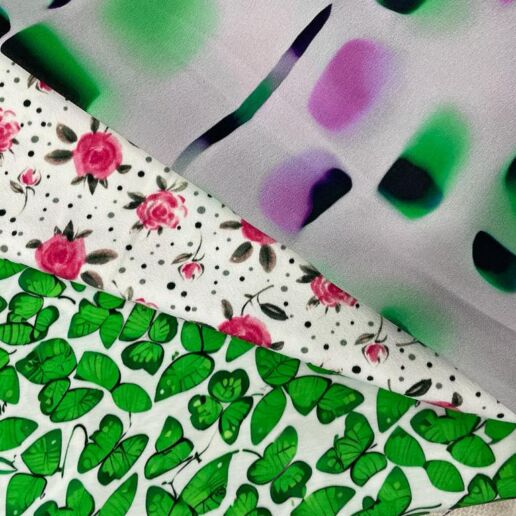
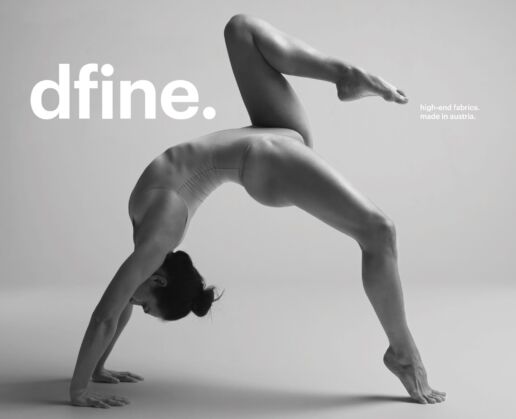
FEINJERSEY
dfine. by Feinjersey is a new collection by a fully integrated fine rib fabric manufacturer in Austria, Europe. They are crafting high-end fabrics by embracing minimalism and precision and combine exceptional functionality with collective responsibility and prioritize the development of degradable materials with a minimal ecological footprint. dfine sets a new standard of ecological production through fully digital resource monitoring and the synergetic reduction of water, energy and chemicals. The collection is segmented into 5 sections: AVANT => Fashion Forward Fabrics (stock program), IVORY => second skin underwear, APEX => functional asthetics, FORMA => fluid shaping and ARMIS => elite safety.
FILDAN
FILDAN introduces several new innovations: The Mushro Grip Tape replaces the velcro tape and comes in different sizes. It can be combined in any way – useable for many different areas of functional clothing. OFF-Hey is a game-changer for fasteners that replaces the traditional Hook & Eye with one single component. One click, and your garments are securely fastened. The Shoulder Strap Pad is an innovative add-on product for bra straps. It avoids cutting in the shoulders.
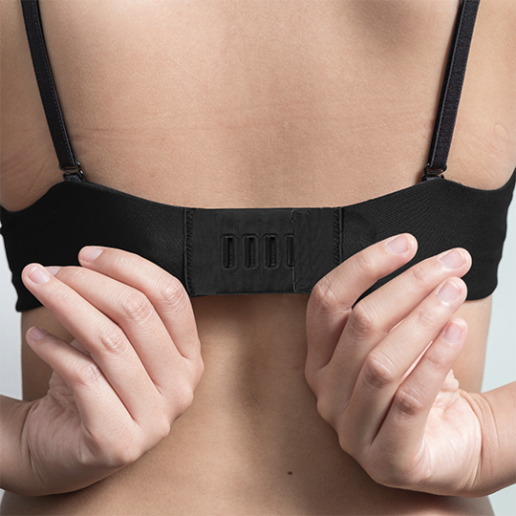
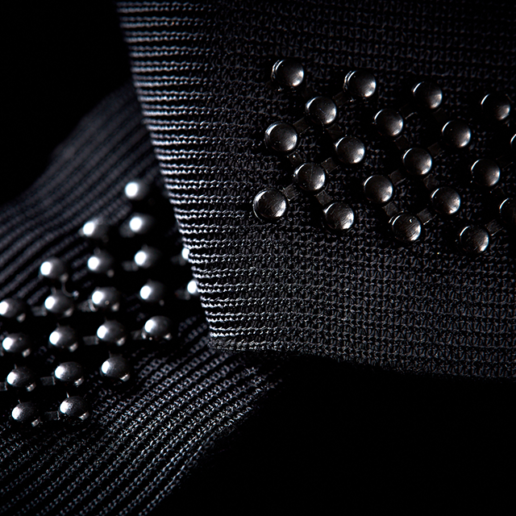

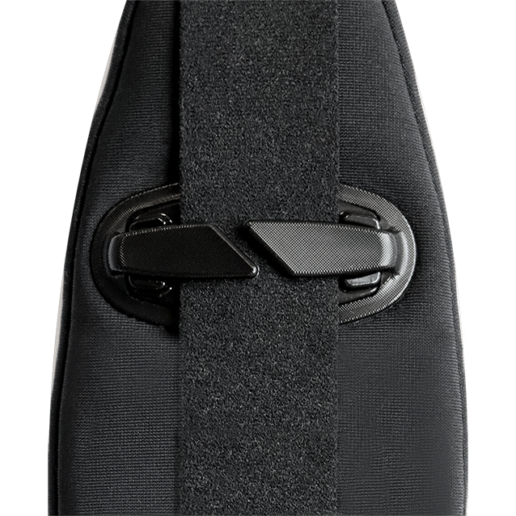
GOTTSTEIN
Focus at Gottstein GmbH & Co. KG continues to be on sustainability and short transport routes. In collaboration with the Hohenstein Institute, the boiled wool and felt fabrics produced in Tyrol were tested for their biodegradability with an extremely positive result. Within just two months, the submitted samples for biodegradation testing made from undyed wool completely decomposed.
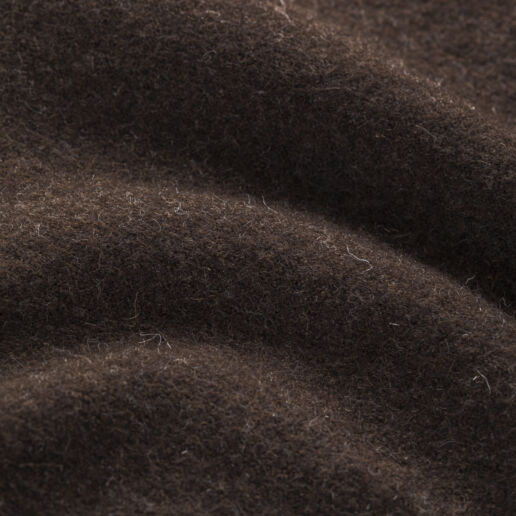
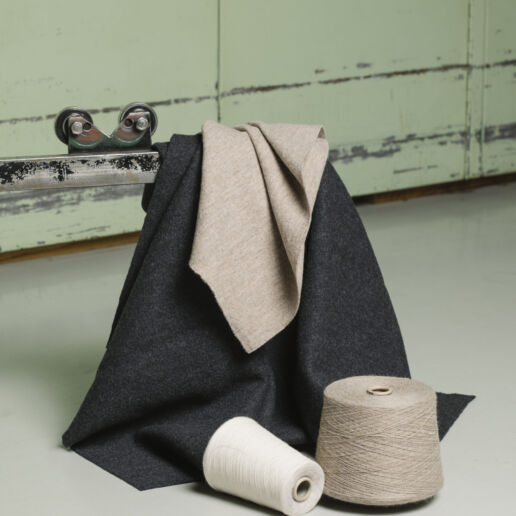
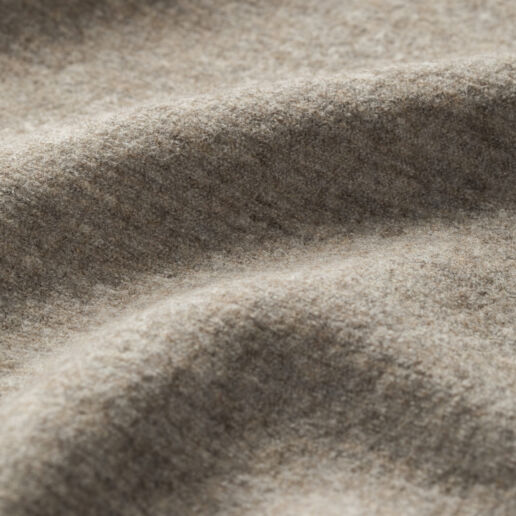
THIS MIGHT BE ALSO INTERESTING FOR YOU
FABRIC HIGHLIGHTS & MATERIAL NOVELTIES FOR AUTUMN.WINTER 25/26 – PART II
6. August 2024
LILABLUM dyes natural fibers with food waste, wood industry byproducts, and plant roots - an approach that is sustainable, and forward-thinking. The pioneering textile company blends tradition with innovation in their latest fabric collection.
New Felted Fabric Collection by Gottstein: Where Trends Meet Sustainability
29. July 2024
Gottstein's new felted fabric collection combines exquisite raw materials, innovation, and sustainability. Here’s a glimpse into what makes this brand-new collection so special...
Additionals Trends Autumn.Winter 25/26 – Part 1
24. July 2024
Trend ranges from pared-down women's wear to bold streetwear, innovative, functional and smart labels, a variety of buttons and beautifully coloured linings is what Autumn.Winter 25/26 is holding ready for you.
Fabric Trends Autumn.Winter 25/26 – Part 1
23. July 2024
The collection dives deep into themes of sustainability and modernity. They've curated a palette that mixes rich, earthy tones like deep green, warm brown, red, and ochre yellow with cooler, industrial hues and a soft pastel range.
ReSOURCE – Spring.Summer25
23. May 2024
Certified, recycled materials, environmentally friendly - this is what the sustainable fabrics from the ReSource range stand for.
Fabric Trends Spring.Summer 25 – Part IX
21. May 2024
The colourful prints tell enchanting stories and are divided into five colour groups that can be perfectly combined.
The latest accessory developments for Spring.Summer 25 – Part VI
16. May 2024
This season’s collection is dedicated to offer top quality trims & accessories; all designed to nurture and encourage international fashion creators’ natural curiosity & creativity.
The Warp Of Symbiogenesis – Sustainable Innovations
14. May 2024
These fabrics carry five stories of invisible connections, narrating tales of cooperation, exploitation, and competition among fungi, lichens, corals, and plants.
The latest accessory developments for Spring.Summer 25 – Part V
9. May 2024
Warmth, light, colours, parties, nature, sense of lightness and freedom...It’s summer.
Fabric Trends Spring.Summer 25 – Part VIII
7. May 2024
Their fabrics are light and contemporary and are characterised by tonal textures, minimal and subtle details and by seasonless neutral colours: all these elements make their product range up todate yet timeless.
Fabric Trends Spring.Summer 25 - Part II
In the FABRICS Area, around 600 international suppliers present their material innovations for all apparel segments. The complete product portfolio of fashionable woven and knitted fabrics made of wool, cotton, silk, blends and functional fibres is represented here. For the Spring.Summer 25 season, we present some highlights from international producers in our FABRICS blogposts:
DELFI
The Spring/Summer ‘25 collection is focused on fancy colours, inspired by a mexican vibrant influence. The growing importance of Ecosustainability in the manufacturing field has led the company to be GRS certificated and to introduce more recycled Nylon and Polyester fabrics too, as well as brand new ecological finishing process.
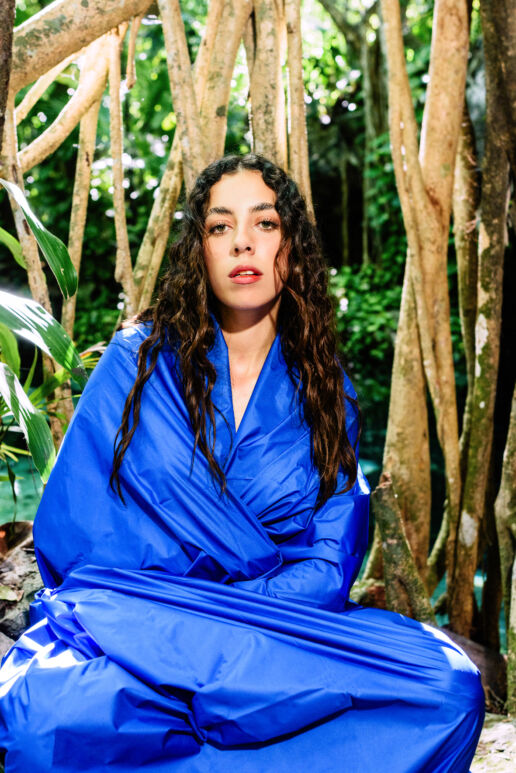
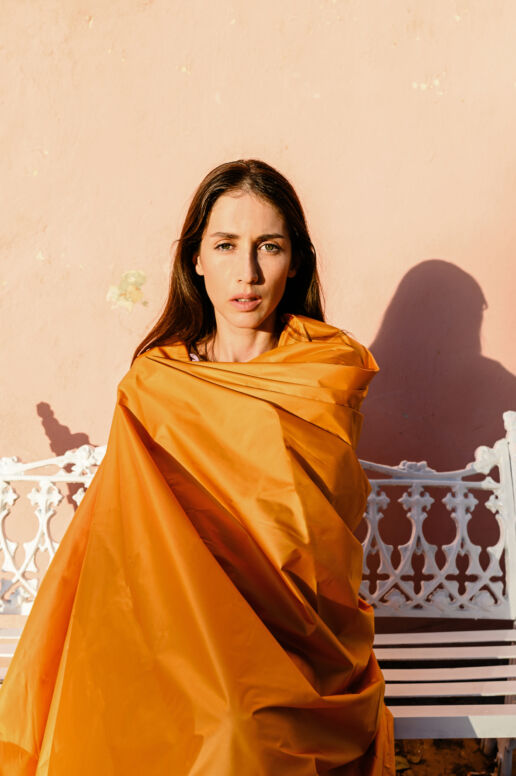

DUTEL CRÉATION
The new jacquard collection of DUTEL for the Spring/Summer 2025 season has been built around four main themes: Persane – a sober and refined theme inspired by Orientalist influences; Pop Corn, a regressive and slightly offbeat spirit with vibrant colours inspired by Pop culture; Wibes – an ethnic and festive theme; and Brut – a sportswear theme in natural tones.
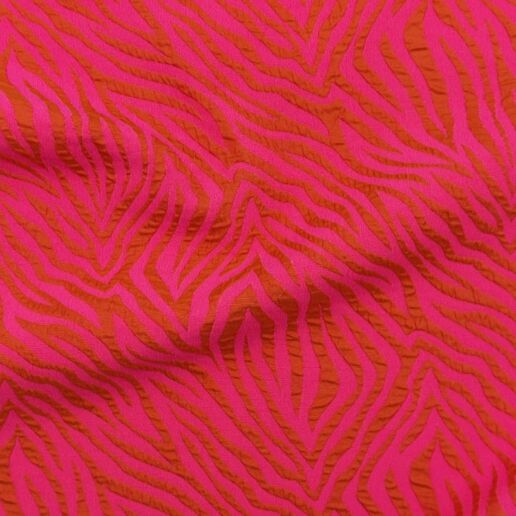
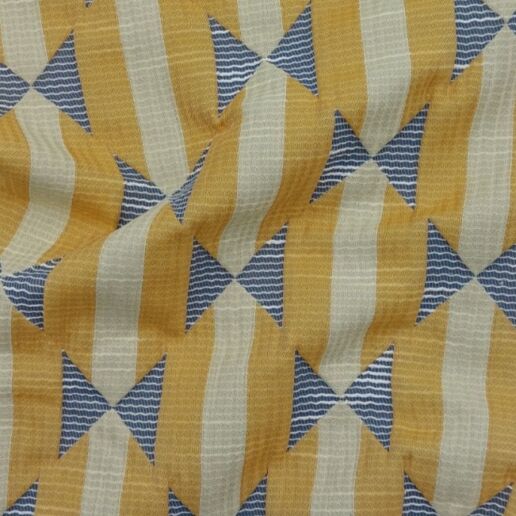
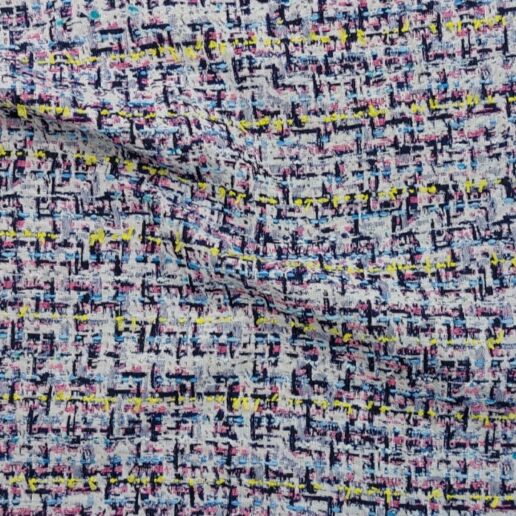
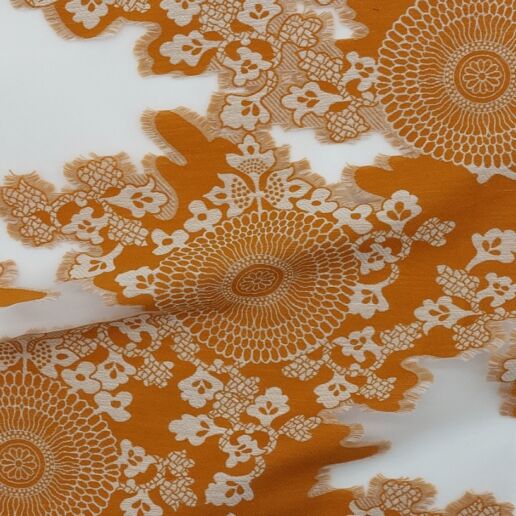
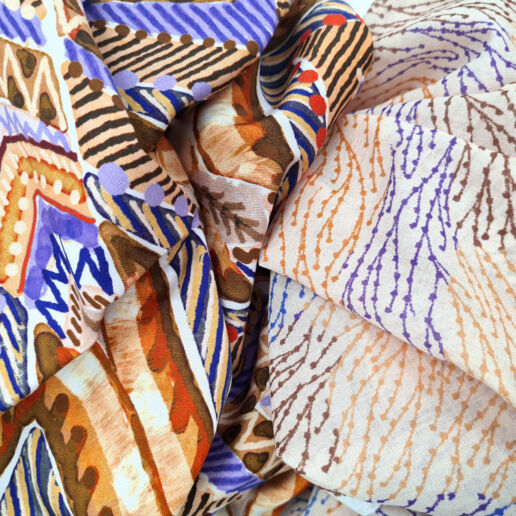
ECO-PRINTS
Discover Eco-prints’ innovative Sublime collection. It’s safe to say that a return to joy and lightness is in the air in the world of fashion! With more feminine prints and cheerful colors, Eco-prints is looking ahead to a brighter future. Spicy atmospheres evoke relaxation and travel, always with the desire to move forward. Come and discover their vision of this future new world on their stand.
ENGIN TEXTILE
Established in the 1960s, Engin Textile supplies fabrics to fashion brands, specializing in women’s and men’s outerwear and active sportswear. With a commitment to high-quality standards, the company offers a diverse range, including eco-friendly options like organic cotton and recycled polyester. Engin Textile’s state-of- the-art machinery ensures reliable production. Emphasizing customer satisfaction, the company continues to offer environmentally friendlyfabric choices.
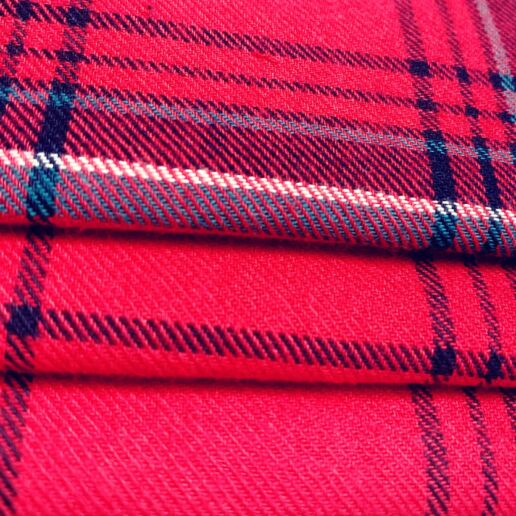
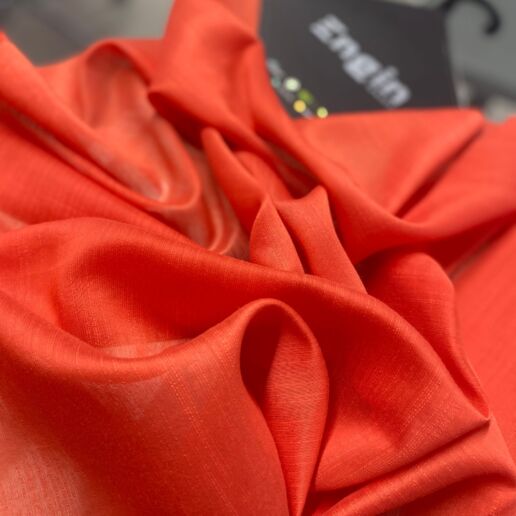
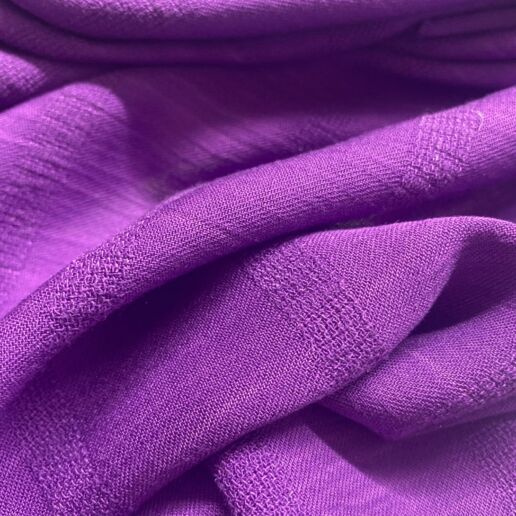
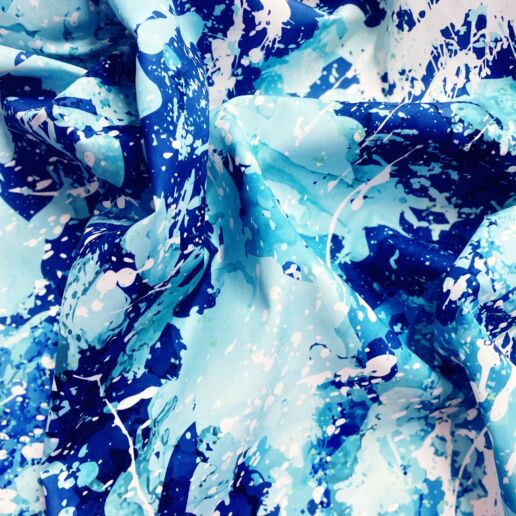
ERSAT TEXTILE
ERSAT TEXTILE is one of the most successful fabric producers in Turkey with an integrated factory from weaving till ready garment. They offer versatile production chains (Poliviscose, Polyester, Cotton, Linen, Wool blends with PES) and also produce mens- and womenswear for suits, jackets, pants, outerwear, dresses, shirts on recycle, Ecovero, GRS, GOTS bases with 2.500.000 mts capacity per month.
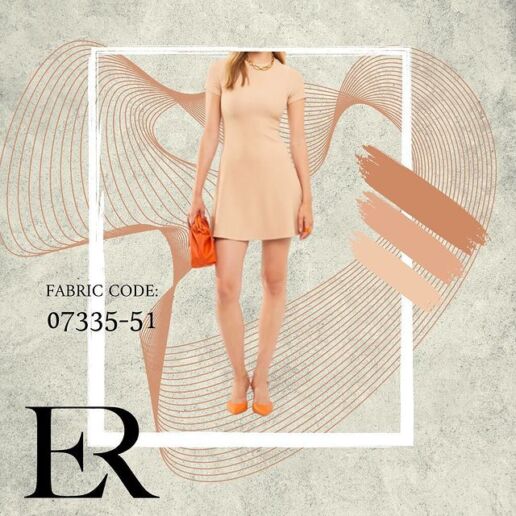
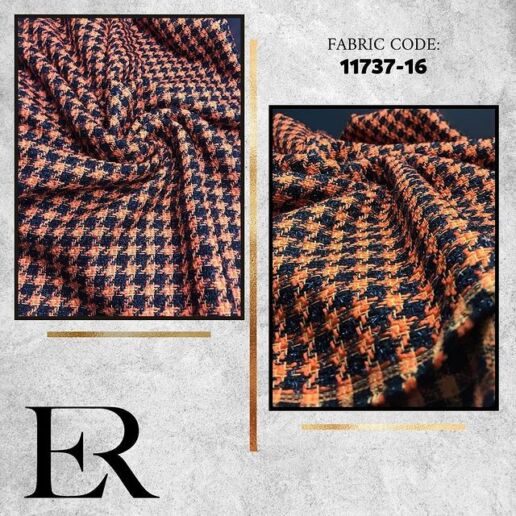
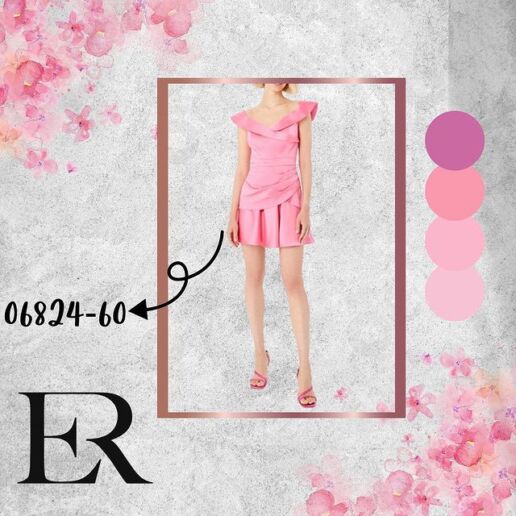
THIS MIGHT BE ALSO INTERSTING FOR YOU
FABRIC HIGHLIGHTS & MATERIAL NOVELTIES FOR AUTUMN.WINTER 25/26 – PART II
6. August 2024
LILABLUM dyes natural fibers with food waste, wood industry byproducts, and plant roots - an approach that is sustainable, and forward-thinking. The pioneering textile company blends tradition with innovation in their latest fabric collection.
New Felted Fabric Collection by Gottstein: Where Trends Meet Sustainability
29. July 2024
Gottstein's new felted fabric collection combines exquisite raw materials, innovation, and sustainability. Here’s a glimpse into what makes this brand-new collection so special...
Additionals Trends Autumn.Winter 25/26 – Part 1
24. July 2024
Trend ranges from pared-down women's wear to bold streetwear, innovative, functional and smart labels, a variety of buttons and beautifully coloured linings is what Autumn.Winter 25/26 is holding ready for you.
Fabric Trends Autumn.Winter 25/26 – Part 1
23. July 2024
The collection dives deep into themes of sustainability and modernity. They've curated a palette that mixes rich, earthy tones like deep green, warm brown, red, and ochre yellow with cooler, industrial hues and a soft pastel range.
ReSOURCE – Spring.Summer25
23. May 2024
Certified, recycled materials, environmentally friendly - this is what the sustainable fabrics from the ReSource range stand for.
Fabric Trends Spring.Summer 25 – Part IX
21. May 2024
The colourful prints tell enchanting stories and are divided into five colour groups that can be perfectly combined.
The latest accessory developments for Spring.Summer 25 – Part VI
16. May 2024
This season’s collection is dedicated to offer top quality trims & accessories; all designed to nurture and encourage international fashion creators’ natural curiosity & creativity.
The Warp Of Symbiogenesis – Sustainable Innovations
14. May 2024
These fabrics carry five stories of invisible connections, narrating tales of cooperation, exploitation, and competition among fungi, lichens, corals, and plants.
The latest accessory developments for Spring.Summer 25 – Part V
9. May 2024
Warmth, light, colours, parties, nature, sense of lightness and freedom...It’s summer.
Fabric Trends Spring.Summer 25 – Part VIII
7. May 2024
Their fabrics are light and contemporary and are characterised by tonal textures, minimal and subtle details and by seasonless neutral colours: all these elements make their product range up todate yet timeless.
Fabric Trends Spring.Summer 25 - Part I
In the FABRICS Area, around 600 international suppliers present their material innovations for all apparel segments. The complete product portfolio of fashionable woven and knitted fabrics made of wool, cotton, silk, blends and functional fibres is represented here. For the Spring.Summer 25 season, we present some highlights from international producers in our FABRICS blogposts:
6DIAS
6Dias exhibits its new Spring Summer 2025 collection with items it produces and sells. Lots of variety of products, such as weaving, jacquard, denims, embroidery, pleats, etc. Visit their showroom in Trofa – Portugal and design your collection with this Portuguese premium supplier. You can get in touch with their team directly email to geral@6dias.pt.
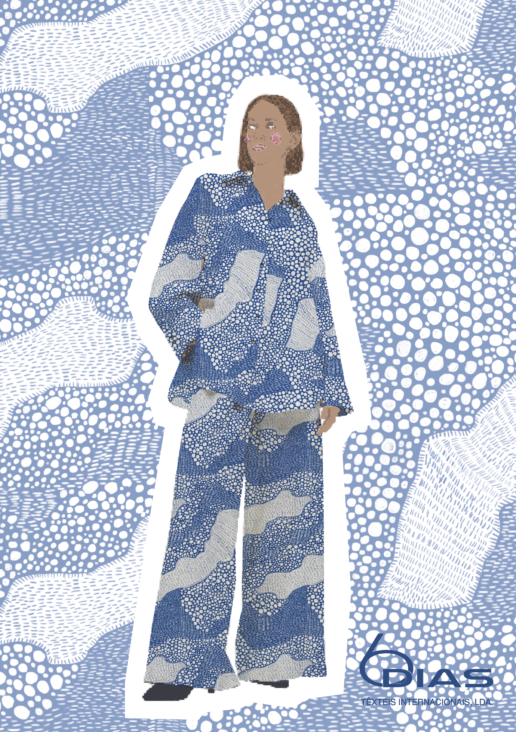
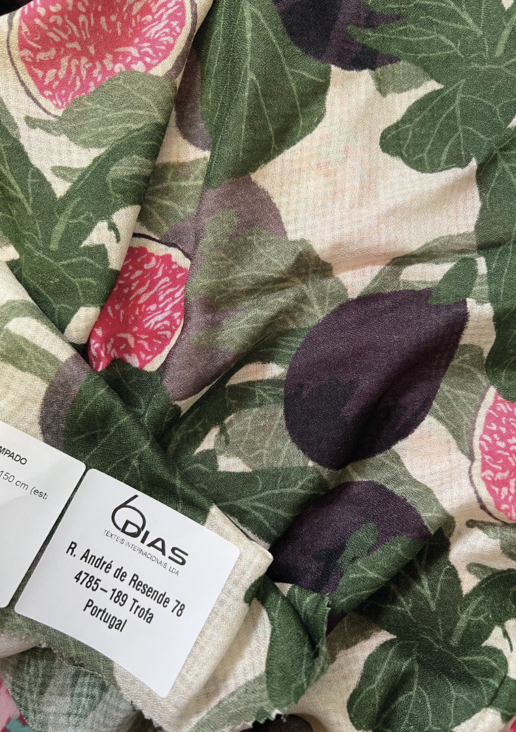
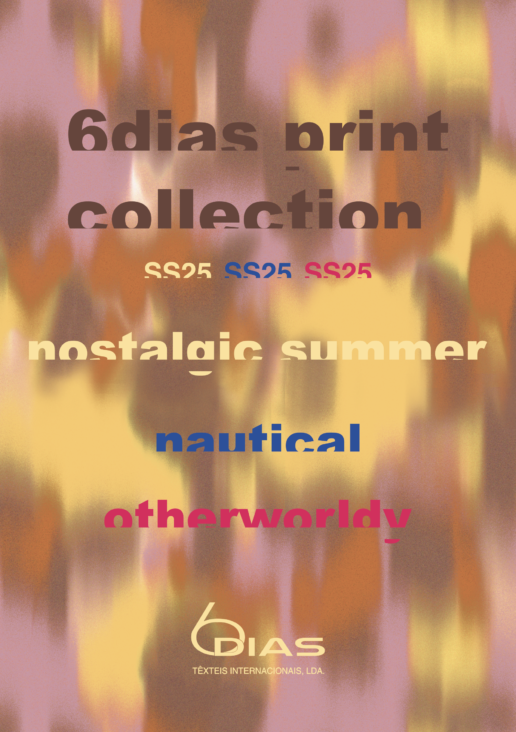
BITZER + SINGLE
For spring/summer 25 season, Bitzer + Single are still focusing on short distances, mainly European products and open communication with their customers. Additionally, to the traditional collections for sportswear, lingerie and healthcare, they now offer certified accessories for the official tendering sector. With over 60 years of expertise in the textile processing industries, they will find the right solution for your needs.
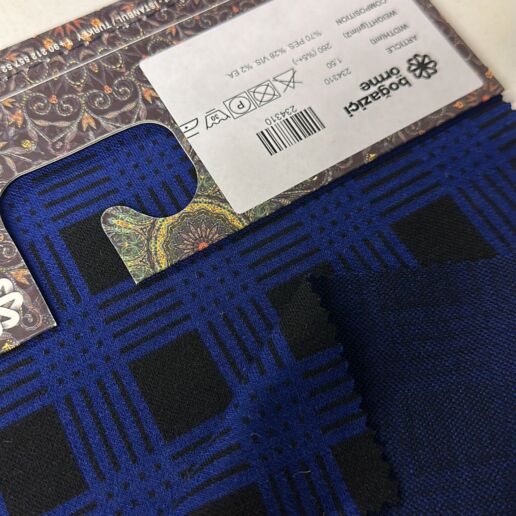
BOGAZICI ÖRME
Elevate your surroundings with the standout knitted jacquard fabric innovations for the Spring/Summer 2025 season from Bogazici Örme. They proudly introduce eco-friendly options. Featuring captivating designs and a perfect harmony of vibrant colors, their collection offers nature-inspired motifs and environmentally conscious choices, seamlessly merging traditional and modern aesthetics. Their exclusively knitted jacquard fabrics reflect the essence of trendsetting sophistication for the upcoming season.
CANCLINI1925 – PER LEI – BLUE1925
The new CANCLINI1925 collection for Spring.Summer 25 craves positivity and comes in renewed graphics, colours and weights that are inspired and influenced by Lake Como. Summer is the perfect time to dare, to have character, to give visibility to the shirt. Discover the new collection from the leading traditional Italian producer of high-end fabrics at the studio of Klaas + Hesse.
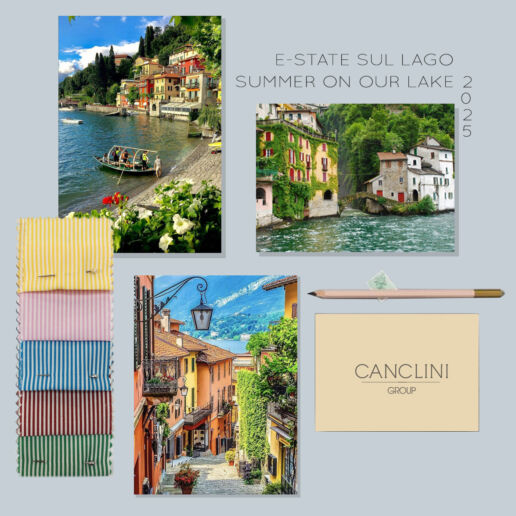
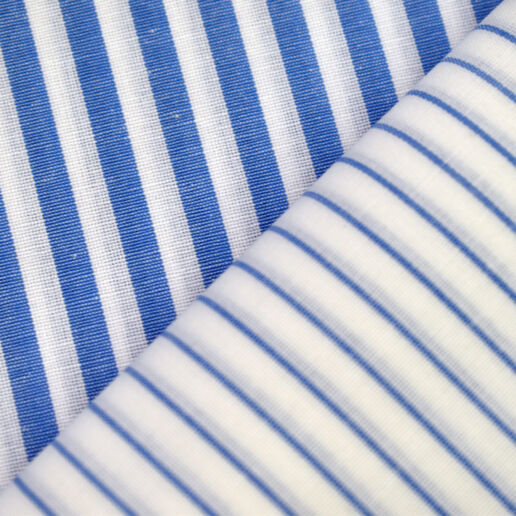
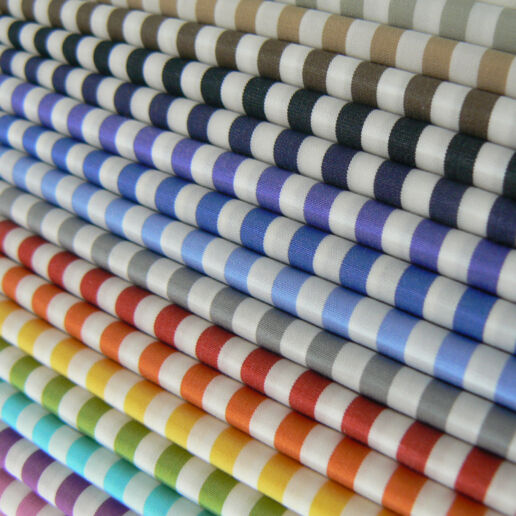
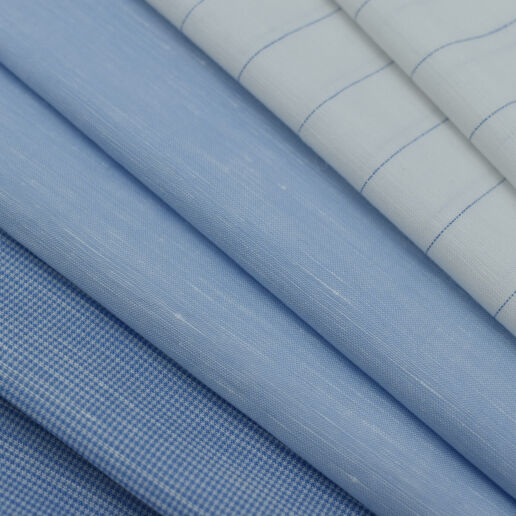
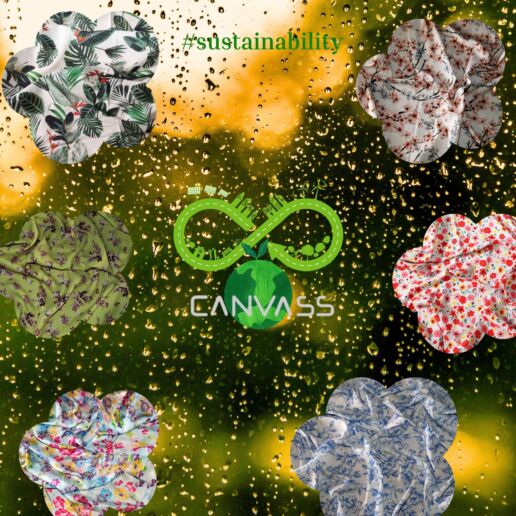
CANVASS TEKSTIL
With awareness of responsibility towards a clean world, natural life and future generations, the priority of Canvass has always been to combine sustainable yarns and natural fibers with rich materials in aesthetic harmony. Their 2025 Spring-Summer products are prepared according to this principle. They provide sustainable production and consultancy services in the fields of yarn, fabric and apparel to textile companies in various countries of the world.
Das könnte Sie auch interessieren
FABRIC HIGHLIGHTS & MATERIAL NOVELTIES FOR AUTUMN.WINTER 25/26 – PART II
6. August 2024
LILABLUM dyes natural fibers with food waste, wood industry byproducts, and plant roots - an approach that is sustainable, and forward-thinking. The pioneering textile company blends tradition with innovation in their latest fabric collection.
New Felted Fabric Collection by Gottstein: Where Trends Meet Sustainability
29. July 2024
Gottstein's new felted fabric collection combines exquisite raw materials, innovation, and sustainability. Here’s a glimpse into what makes this brand-new collection so special...
Additionals Trends Autumn.Winter 25/26 – Part 1
24. July 2024
Trend ranges from pared-down women's wear to bold streetwear, innovative, functional and smart labels, a variety of buttons and beautifully coloured linings is what Autumn.Winter 25/26 is holding ready for you.
Fabric Trends Autumn.Winter 25/26 – Part 1
23. July 2024
The collection dives deep into themes of sustainability and modernity. They've curated a palette that mixes rich, earthy tones like deep green, warm brown, red, and ochre yellow with cooler, industrial hues and a soft pastel range.
ReSOURCE – Spring.Summer25
23. May 2024
Certified, recycled materials, environmentally friendly - this is what the sustainable fabrics from the ReSource range stand for.
Fabric Trends Spring.Summer 25 – Part IX
21. May 2024
The colourful prints tell enchanting stories and are divided into five colour groups that can be perfectly combined.
The latest accessory developments for Spring.Summer 25 – Part VI
16. May 2024
This season’s collection is dedicated to offer top quality trims & accessories; all designed to nurture and encourage international fashion creators’ natural curiosity & creativity.
The Warp Of Symbiogenesis – Sustainable Innovations
14. May 2024
These fabrics carry five stories of invisible connections, narrating tales of cooperation, exploitation, and competition among fungi, lichens, corals, and plants.
The latest accessory developments for Spring.Summer 25 – Part V
9. May 2024
Warmth, light, colours, parties, nature, sense of lightness and freedom...It’s summer.
Fabric Trends Spring.Summer 25 – Part VIII
7. May 2024
Their fabrics are light and contemporary and are characterised by tonal textures, minimal and subtle details and by seasonless neutral colours: all these elements make their product range up todate yet timeless.








